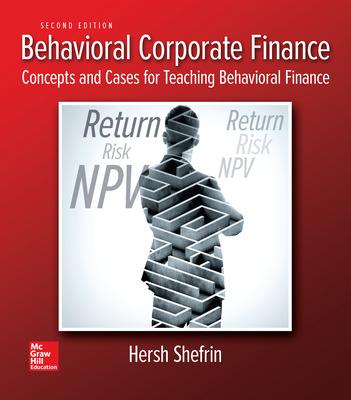Question
Question 1 On December 28, 2023, the Wall Street Journal published an article titled Low Battery Metal Prices Set to Persist in 2024, Adding Friction
Question 1
On December 28, 2023, the Wall Street Journal published an article titled "Low Battery Metal Prices Set to Persist in 2024, Adding Friction to Energy TransitionLinks to an external site.". These battery metals include elements such as lithium, cobalt, and nickel, but you can think of them as a single product, "battery metals." According to the article, the battery metal market will continue to face low prices due to increased supply and weaker-than-expected demand. It is not necessary to read the article as all relevant information is included in the question narrative. The article explains: "Prices for metals used in batteries swooned in 2023, as rising supply and weak demand drove lithium to its cheapest level in two years, cobalt to its lowest point in four and nickel to its pandemic-era nadir. With supply increasing and demand falling short of expectations, prices have fallen." For Question 1, graphically depict the demand and supply in the market for battery materials in 2022 (prior to the changes described in the article) and label the equilibrium price and quantity. Label the horizontal and vertical axes. Assume that the demand curve is downward-sloping and the supply curve is upward-sloping. Label the 2022 supply curve as S0; the demand curve as D0; the equilibrium price as P0; and the equilibrium quantity as Q0. Question 2
Anticipating high demand for electric vehicles (EVs), mining companies expanded production of battery metals leading into 2023. However, the increase in demand for EVs in 2023 was lower than expected due to slower-than-expected growth in consumers' incomes. (In other words, demand still increased, but it was a relatively small increase). Graphically illustrate how the rising supply of battery metals and weak demand for EVs affected the battery metals market in 2023. Label the new supply curve S1 and the new demand curve D1. Clearly show the direction of any shifts with arrows; and keep in mind the relative magnitude of changes in supply and demand as described in Questions 1 and 2. Specifically, make sure to draw S1 and D1 in such a way that the new equilibrium price is consistent with the information provided in the Wall Street Journal article quoted in Question 1. Label the new equilibrium price P1 and the new equilibrium quantity Q1. Compare the new equilibrium to the original equilibrium; and explain what happened to price and quantity. Question 3 Now, let us consider a generic scenario involving a simultaneous change in supply and demand. This question is unrelated to your analysis of the market for battery metals from Question 1 and Question 2 or to the Wall Street Journal article. If both supply and demand curve increase, is the change in price that you found guaranteed (e.g., non-ambiguous)? What about the change in quantity? If the change in either price or quantity is not guaranteed (e.g., ambiguous), what is responsible for any ambiguity?
Question 4
Now, consider the market for EV batteries. The Wall Street Journal article referenced in Question 1 explains that the cost of production of EV batteries in 2023 has decreased relative to 2013 due to (1) lower raw material prices and (2) improvements in technology that led to a decrease in the amount of battery metals used in a typical battery. Please break down the impact of these two changes (lower raw material prices and reduction in the amount of metal per battery) on fixed, marginal, variable, and total costs of producing EV batteries, assuming other factors are unchanged from 2013 to 2023. Use the pull-down menus to select one answer for each category of costs. Cost Category Impact of Changes from 2013 to 2023 Average Fixed Cost (AFC) Marginal Cost (MC) Average Variable Cost (AVC) Average Total Cost (ATC)
Step by Step Solution
There are 3 Steps involved in it
Step: 1

Get Instant Access to Expert-Tailored Solutions
See step-by-step solutions with expert insights and AI powered tools for academic success
Step: 2

Step: 3

Ace Your Homework with AI
Get the answers you need in no time with our AI-driven, step-by-step assistance
Get Started


